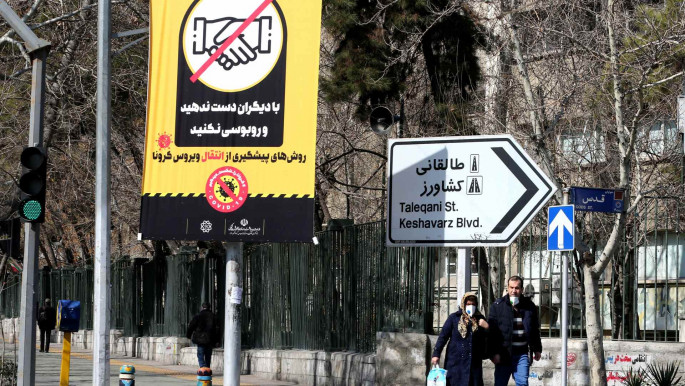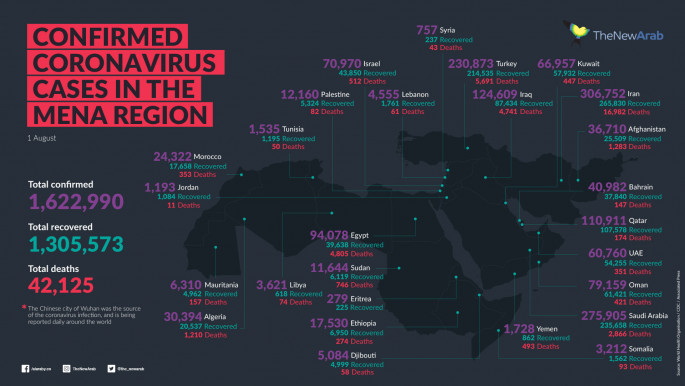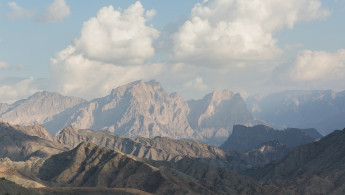Coronavirus: Oman's tourism sector takes a hit
The economic impact of the coronavirus outbreak on Oman's tourism industry is yet to be forecasted. Globally, the International Air Transport Association (IATA) estimated that a drop-off in travel demand could cost passenger airlines US $113 billion in revenue this year.
To date, 118,000 people in 114 countries have been infected by the coronavirus pandemic. Oman's Ministry of Health reported two more cases of coronavirus on March 9, bringing the number of confirmed cases in the country to 18, all related to travel to Iran and Italy.
The Sultanate's flag carrier has suspended all flights to and from Milan until further notice and the Royal Opera House Muscat – a popular destination among international tourists – has cancelled all concerts for the months of March and April.
Furthermore, gatherings, events and international conferences which host international participants are suspended.
Oman bans cruise ships
 |
|
| Read also: Lebanon's medical students on the frontline in fighting coronavirus |
"Cruise ships occupancy rate have been badly affected too. I went to the Grand Mosque and though a cruise ship is in town, the number of visitors did not represent it," Al Dhuhli said.
In Oman's southernmost governorate, tourism professionals expected 24 cruise ships to berth Salalah's port in March and April.
"Will they even be allowed in? Some cruise operators told me they might not come," Salalah-based tour guide Ali Ameer told The New Arab.
His fear got confirmed on March 12 when Oman's Supreme Committee announced that all cruise ships are banned from entering the Sultanate's ports for a period of one month.
"But health is more important, we are afraid those tourists could bring coronavirus," the tour guide said.
Furthermore, Princess Cruises, the operator of two coronavirus-stricken ships, said it would suspend global operations of its 18 cruise ships for two months, Reuters reported.
Cruise tourism is identified by Oman's Ministry of Tourism as a top contributor to international arrivals. The sector recorded a growth of over 43 percent in 2019, bringing in 283,000 passengers to the Sultanate and the number was forecasted to reach 300,000 in 2020.
The exposure to coronavirus-hit markets is also a further source of concern for the Gulf state's tourism sector as visitors from China, Italy and Iran – the countries that recorded the most coronavirus cases in the world – quadrupled between 2011 and 2018 to reach 125,000.
Oman's Ministry of Tourism did not respond to The New Arab's requests for comments.
 |
The exposure to coronavirus-hit markets is also a further source of concern for the Gulf state's tourism sector as visitors from China, Italy and Iran – the countries that recorded the most coronavirus cases in the world – quadrupled between 2011 and 2018 to reach 125,000 |  |
Khareef season under threat?
Gulf citizens accounted for about half of international arrivals to Oman: Saudi Arabia and the United Arab Emirates are identified as key source regional markets for tourism.
On March 9, the kingdom banned its citizens and residents to travel to Oman and have temporarily suspended all flights and cruises to the country to prevent coronavirus spread.
 |
|
| Read also: India ignores Kashmiri families' desperate pleas to evacuate students from coronavirus-hit Iran |
"This will create a highly negative short term impact for airlines such as Oman Air and Salam Air, as well as hotels," Ralph Hollister, a tourism analyst at GlobalData, told The New Arab.
If the impact of coronavirus remains strong by the end of April 2020, Hollister believes it might affect international arrivals during Khareef and 'push tourism figures down' – last year, 70,000 Gulf tourists visited the country during this season also known as monsoon.
"But, the virus outbreak will be likely to create an increase in domestic trips in Oman, which could, to some extent, offset the lack of international visitation," the analyst pointed out.
In the long term, Saudi Arabia's aggressive push to develop its own leisure tourism industry and attract 100 million tourists per year by 2040 is a greater threat to Oman's strategy.
To be distinguished from other destinations, Oman has long promoted itself as a hidden jewel at the tip of the Gulf. Analysts agree that some degree of competition will be inevitable since Saudi Arabia and Oman target similar segments of the global tourism market.
The Sultanate ambitions to attract 11 million visitors by 2040 and create 223,000 direct tourism jobs to Omani nationals as youth unemployment is one of Oman's most pressing internal issues. Roughly half of Oman's youths are unemployed, the World Bank estimated.
 |
|
Historic oil crash
Beyond the prospect of a downfall in the tourism sector, the coronavirus outbreak has slashed global demand for oil.
"The threat coronavirus provides is potentially greater to Oman when compared to its Gulf neighbours because of its direct exposure to China," Hollister said. In November 2019, Oman exported 93 percent of its oil production to China.
On March 8, the situation worsened as oil prices plunged by nearly 25 percent after Saudi Arabia launched an oil price war.
Oman relies heavily on the hydrocarbon industry to balance its annual budget since the sector accounts for 74 percent of government revenues.
Oman's economy is ranked as the Gulf's worst-performing and the country's ratio of debt to GDP, which has been multiplied by 12 since 2014, is rated junk by all three major agencies.
"Debt will continue to increase in the next two years," rating agency Moody's wrote.
Following the death of Sultan Qaboos, Sultan Haitham called for structural reforms to strengthen the local economy but a global recession due to the global impact of coronavirus pandemic would revamp those ambitious targets and durably reduce the number of long haul destinations tourists who can afford to visit the Arabian Peninsula's hidden jewel.



